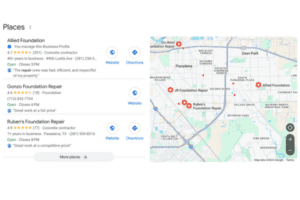One of the biggest obstacles facing businesses and advertisements on social media is market saturation. There are tons of posts and accounts on social media that can easily crowd out your brand’s presence. This is especially true when it comes to smaller businesses. Figuring out how much your brand is recognized and what percentage of the market knows your brand is called a Share of Voice (SOV). Calculating this will help you know where to focus your marketing efforts – and help you calculate what your competitor’s influence is.
And while measuring your company’s growth based on your own metrics (say, increased followers or mentions since last month), it’s also important to look at where you fit in the overall market. How does your brand stack up against competition? Are you mentioned in conversations surrounding your industry? There are several ways that you can measure your social influence – and some ways you can increase your share of voice as well.
Identifying Your Competitors
The first step to finding out how your share of voice compares to your competitors is finding out who your direct competitors are. Finding this out will take a little leg work, but knowing who your particular competitors are is important if you’re wanting to see how your brand is doing in the marketplace.
Your first step should be a simple Google search. Search for keywords that describe your business or industry. If you’re a gardening business, search something along the lines of “gardeners in [your area]” or “gardening and landscaping companies.” Once you’ve identified potential competitors, visit their websites and see which social media platforms they’re on.
Pull them up on social media and see what kinds of followers they have and if they’re in your market and industry. It’s probably a good idea to narrow your top competitors down to the top four or five brands that are similar to your own brand. After identifying your competitors, go ahead and make a list of the social media platforms you’re most active on (Facebook, LinkedIn, YouTube, Twitter, Instagram, etc).
See if your competitors have social media accounts on the platforms you do. It can be helpful to make a spreadsheet of your competitors and their social media accounts to keep the data that you find in one place. There doesn’t have to be complete overlap, but for your competitors to be true competitors, they should be active on almost all of the same platforms you are.
Calculating Share of Voice
Finding out what exactly is your share of voice – and the share of voice of your competitors – can help give you direction on how to increase yours. The process of how exactly to find share of voice can vary company to company, but the basic idea is the same everywhere:
Your advertising / Total market advertising = share of voice
Depending on your platform and the particular metrics you use to calculate this, the results may vary a little. However, that basic formula is the foundation to finding out a particular brand’s presence in the market. There are several methods you can use to find out how your SOV compares with your competitor’s SOV.
Social Media – When you calculate you and your competitors SOV based on social media platforms and metrics, you can break the data down into specific categories and audiences to see exactly where you stack up.
The first way you can calculate your SOV is by using a social media metrics tool or company/agency to help you get an overall picture of how well your brand is known compared to competitors across platforms. This gives you an overall idea about where you stand in general across social media platforms. But you might want to know how a particular campaign is doing, or how you’re reaching a specific target demographic, such as joggers in their 20s.
When you’re calculating SOV by social media mentions, you’re able to hone in on particular audiences and see how many times not only your brand was mentioned, but also take a look at things like overall customer engagement, number of mentions and shares, etc. When compiling this data, you can either do it manually or using an app or company who specializes in social media marketing.
Most social media platforms will have built-in tools to calculate these statistics for you. Before setting out to calculate your competitor’s SOV, it’s a good idea to look at what exactly you’re going to be examining, such as keywords, target demographics, and particular platforms.
Keywords – You can also find out where your brand stands up to other brands by using Google Analytics to see how much web traffic your respective brands get from consumers searching for particular keywords associated with your industry. Searching by keywords can help you know how effective you’re being in marketing what your brand does, especially as it relates to your competitors.
AdSense – In order to calculate how many people have seen your ads versus your competitor’s ads, use AdSense. This will tell you how effective your marketing is based on SOV for paid advertising. While using this tool won’t show you how effective certain things such as social media presence is, it will show you just how effective your paid ads are in comparison to your competitors. Using this tool to calculate SOV in ads will give you vital information to help you be more effective in paid advertising.
Once you’ve figured out what your competitor’s share of voice is and compared it to yours, you can pinpoint specific areas where you can improve. Knowing how you stack up against your competition will give you direction and focus for your next marketing campaign.















